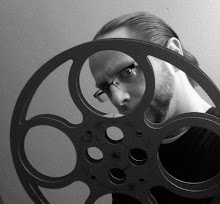“If they catch you, they will kill you…”
This month marks the 40thanniversary of Martin Rosen’s WATERSHIP DOWN.
Based on the beloved and popular 1972 novel by Richard Adams of the same name, WATERSHIP DOWN told the tale of a colony of rabbits who are driven from their home…in search of a promised land only to encounter many perils along the way. Invoking themes of oppression, mythology, a Biblical fable, and Homer’s Odyssey, it was an animated feature that took bold steps into adult territory with horrifying imagery and dark tones.
A British production, the film began its journey in 1975 with director John Hubley, who had a long list of credits from working on TV’s SESAME STREET, set to direct. Hubley would pass away in 1977, and would only complete work on the opening prologue. He was replaced by Rosen, who was entering his first feature film.
The opening prologue by Hubley was presented in a traditional, cartoon-style animation, and then shifts to a detailed, naturalistic style. The backgrounds were done in a watercolor fashion, based on the diagrams from Adams’ novel. Most of the locations in the film were real, or based on actual areas in Hampshire, England. The voiceover cast was an impressive lot including John Hurt, Richard Briers, Denholm Elliott, Nigel Hawthorne, Joss Ackland, Harry Andrews, and Roy Kinnear. It was the last film work of comedian and actor Zero Mostel. The score was provided by Angela Morley and Malcolm Williamson. Art Garfunkel’s British No. 1 hit Bright Eyes was included in the soundtrack. It would be the first animated feature film to be presented in Dolby surround sound.
The film’s dark nature caused controversy. With many scenes depicting rabbits fighting and clawing each other to death in stunning bloodshed, WATERSHIP DOWN was one of the first films to earn a British “U” rating (the equivalent of G rating in the U.S.), that came with a warning to parents. In the U.S. however, it would be labeled PG; a rarity for an animated film.
The controversy would not matter, as WATERSHIP DOWN would earn a positive reception. Although it struggled in the U.S. Box Office, in the U.K. it would be the sixth highest earner of the year. It would receive a nomination for the Hugo Award for Best Dramatic Presentation. In 2004, the magazine Total Film named WATERSHIP DOWN the 47thgreatest British film of all time, and ranked 15thin the 100 Greatest Tearjerkers.
*
This Blogger discovered WATERSHIP DOWN by way of a new TV service at home called HBO in 1979. Expecting another cartoon, there was shock to be had as the rabbits battled each other; clawing each other to death, biting off ears, suffocating underground, and strangled in snare traps. Seeing that crimson red spill about in a cartoon was shocking then, and it is still shocking now. When TOY STORY 3 was released in 2010, audiences were taken aback by a few dark scenes, and Pixar was either commended or cursed for it…but they owed their ability to go in that direction to WATERSHIP DOWN. Aside from that, the film is a masterwork of important themes; the oppressed, the helpless, those who cannot fight for themselves…all themes that are even more vital now than they were in 1978. Layered with its own mythology, it has a timeless feel and proves that a great film can be found anywhere. Even in a cartoon.
“…but first they must catch you.”


No comments:
Post a Comment
A few rules:
1. Personal attacks not tolerated.
2. Haters welcome, if you can justify it.
3. Swearing is goddamn OK.